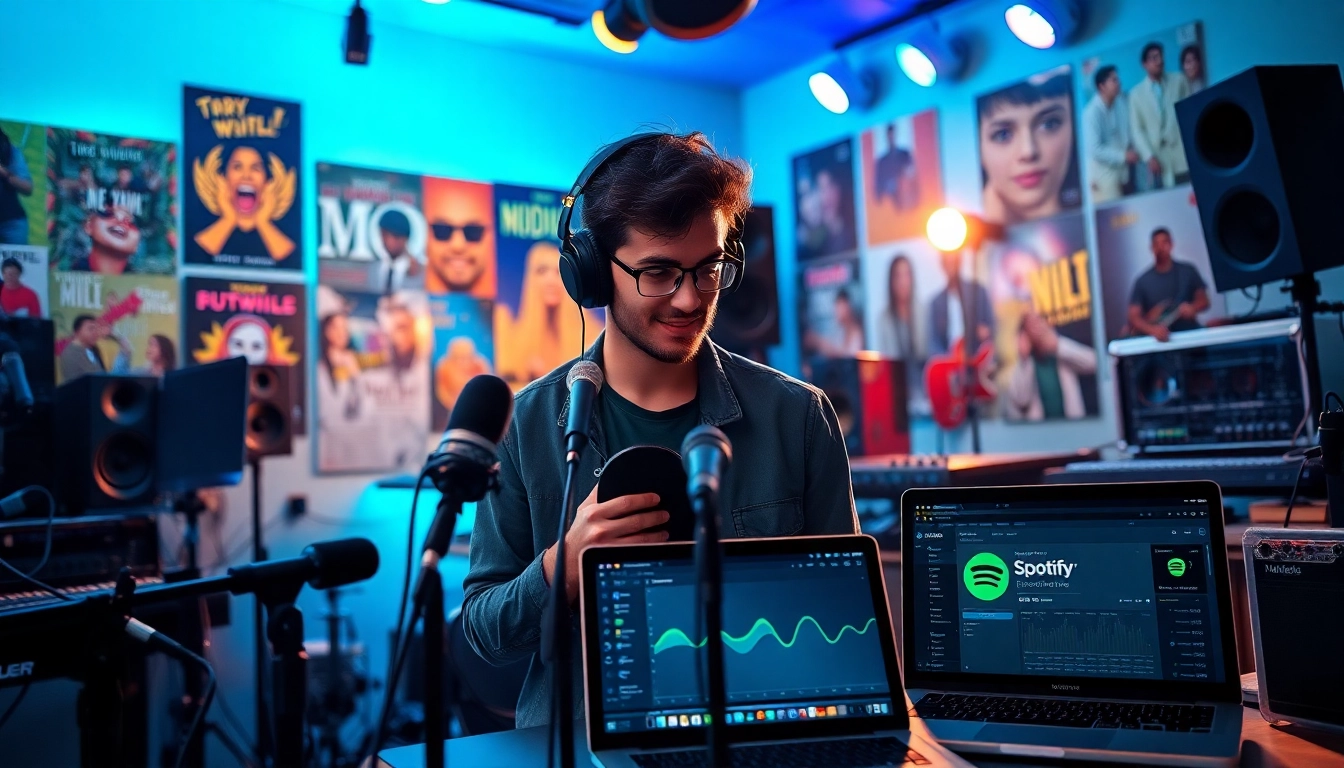Understanding Music Pitching
Definition and Importance of Music Pitching
Music pitching can be defined as the process of presenting your music to curators, bloggers, record labels, or industry influencers with the goal of getting it featured or played. This act is crucial not just for emerging artists but also for seasoned musicians looking to expand their reach. Without effective music pitching, even the most talented artists may struggle to gain exposure, ultimately stunting their career growth. Successful pitches can lead to increased plays, fans, and opportunities within the music industry. As such, mastering music pitching strategies is essential for anyone serious about their music career.
Key Platforms for Music Pitching Opportunities
In today’s digital landscape, artists have access to an array of platforms to showcase their music. Here are some key players in the music pitching ecosystem:
- Spotify: One of the most significant platforms for music discovery, Spotify allows artists to pitch to playlist editors through Spotify for Artists.
- Apple Music: Like Spotify, artists can create pitches for their releases via Apple Music, potentially getting featured in curated playlists.
- SoundCloud: This platform allows artists to share music directly with fans and curators, enabling grassroots promotion.
- YouTube: Video content is a powerful tool; pitching music to channels that curate music can dramatically increase visibility.
- Music Blogs: Many blogs specialize in discovering new talent, providing another avenue for artists to pitch their music.
Common Mistakes in Music Pitching
Despite the importance of pitching, many artists fall short due to common mistakes. Here are a few to watch out for:
- Generic Pitches: Tailoring pitches to specific curators increases the chances of getting noticed. A one-size-fits-all approach often fails to resonate.
- Lack of Professionalism: Spelling errors, informal language, and incomplete information can make pitches appear unprofessional.
- Pushing Too Hard: Aggressive follow-ups can annoy curators; patience and professionalism are key.
- Ignoring Submission Guidelines: Many platforms have specific guidelines for submissions. Not following these can lead to immediate rejection.
Crafting Your Pitch
Elements of an Effective Music Pitch
An effective music pitch should contain several key elements that capture the curator’s attention:
- Clear Subject Line: Whether sending an email or a direct message, a clear and engaging subject line is your first chance to hook the curator.
- Brief Introduction: Introduce yourself succinctly. Include your genre, notable achievements, or a personal touch that makes you stand out.
- Summary of the Track: Provide a concise yet engaging description of your track. Highlight what makes it unique and why the curator would be interested.
- Link to the Track: Ensure easy access by including a streaming link or downloadable version of your music.
- Closing Statement: End on a polite note, thanking the curator for their time, and express your hopes for their feedback.
Customizing Pitches for Different Curators
Each curator may have different tastes or requirements. Research is critical:
- Understand Their Taste: Listen to their previously featured tracks. Understanding their style will help you pitch effectively.
- Customize Your Pitch: Tailor your language and content based on the curator’s preferences. Show them that you’ve done your homework.
- Mention Previous Features: If applicable, reference any prior coverage on similar platforms, showing that you are an artist worth considering.
Utilizing Data to Strengthen Your Pitch
Data can elevate your pitch significantly. Consider these strategies:
- Engagement Metrics: Highlight past performance metrics, such as streaming numbers or social media engagement, to show your track’s potential reach.
- Successful Collaborations: If you’ve worked with notable artists or companies, mention these collaborations as credibility boosters.
- Audience Insights: Use data to demonstrate your audience demographics. Knowing who listens to your music can help curators see your potential fit.
Timing Your Pitch Right
Understanding Release Cycles and Pitch Timing
Timing can be just as vital as the pitch itself. Here’s why:
- Release Timing: Pitch your music a minimum of 7-10 days before its release date. This allows curators time to consider and promote your music effectively.
- Understand Music Seasons: The music industry has busy seasons (e.g., summer hits, holiday music). Pitching during a peak time may yield better results.
Strategies for Pre-release and Post-release Pitching
Different strategies can be employed at various times:
- Pre-release: Develop buzz before releasing tracks by leveraging teaser videos and engaging posts across social media, followed by targeted pitches to curators.
- Post-release: After release, refine your pitch to focus on new engagement or reviews, highlighting how the music has resonated since its launch.
Utilizing Tools for Scheduling and Reminders
To keep track of your music pitching efforts:
- Calendar Apps: Tools like Google Calendar can help you schedule pitch times and reminders for follow-ups.
- Project Management Tools: Apps like Trello or Asana can help you organize your pitching strategies and track progress.
- Email Marketing Tools: Use platforms like Mailchimp to manage communication with curators and fans alike.
Building Relationships with Curators
Networking within the Music Industry
Networking is crucial for a sustainable music career. Here’s how to connect:
- Attend Music Events: Conferences and festivals provide excellent networking opportunities. Meet curators in person whenever possible.
- Engage on Social Media: Follow curators on platforms like Instagram and Twitter. Comment on their postings to establish a rapport.
- Join Music Communities: Participate in online forums or local music groups where curators may also be members.
How to Follow Up After Sending Your Pitch
Following up can be tricky, but it’s important:
- Give It Time: Wait at least a week after sending your initial pitch before following up.
- Keep It Short: Your follow-up should be brief, polite, and to the point, expressing understanding of their busy schedule.
- Express Gratitude: Always thank them for their time and consideration, whether they responded or not.
Creating Long-term Relationships with Playlists Curators
Long-term relationships can lead to recurring opportunities:
- Be Consistent: Keep curators updated on your musical journey, including new releases and milestones.
- Provide Value: Share playlists or other curatorial work in which you’re featured, showing appreciation for their support.
- Stay Professional: Always maintain professionalism, respecting their time and opinions.
Measuring Success in Music Pitching
Key Performance Indicators for Music Pitching
Keep track of your success by considering the following KPIs:
- Positive Responses: Count how many curators responded positively to your pitches.
- Playlist Additions: Measure how many playlists include your tracks post-pitching efforts.
- Increased Streams: Monitor your streaming statistics to see if your pitching efforts correlate with an increase in plays.
Analyzing Feedback from Curators
Feedback is an invaluable tool for improvement:
- Constructive Criticism: Carefully read feedback and take notes on areas for improvement.
- Incorporate Suggestions: Implement any constructive feedback into future pitches, showing that you’re adaptable.
Adapting Your Strategy Based on Results
Finally, your approach should evolve based on performance:
- A/B Testing: Experiment with different pitch formats or content to see what resonates best with curators.
- Iterate Constantly: Use data-driven insights to refine your pitches, improving your strategies continually.



